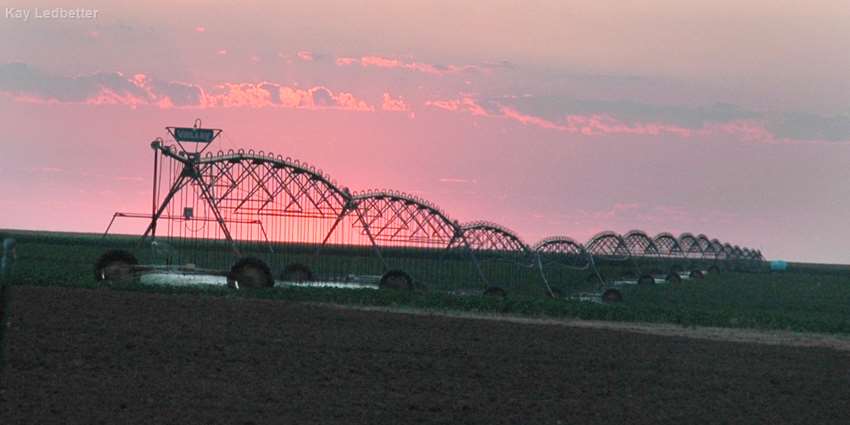Much of the water under the Ogallala Aquifer region is declining at a faster rate than it recharges by rainfall. What does the dwindling supply of groundwater mean for the producers in this region? txH2O talked to a few producers about what it is like farming on a declining water resource.
Bob Meyer: Canyon, TX
We definitely have to live with a declining aquifer, and I have had to adjust the size of my irrigated crops and what type of crops I plant with the decline. I am looking for crops that are most efficient with the water. A few years ago, I grew sunflowers because they were a low water-use plant and they use the water later on in the season when I have it available. I’ve increased my cotton acres also because they are most efficient with the water. A big water-saving tool for me is using strip-till and no-till in all my acres, dryland and irrigated. Technology has let us be more efficient with the water we do have.
My greatest hope is that it (the aquifer) gets replenished, but I don’t think that’s going to happen. I guess we just continue with technology with our crop and seed varieties and stretch it out as long as we can. My fear is that it declines a lot quicker than we thought. We have just got to be careful of not over-extending ourselves.
Tommy Cartrite: Sunray, TX
As the aquifer goes down, we have less hydrostatic pressure and the wells pump less water. Pumping costs are higher, but you get less water as well. Water is the lifeblood. I mean, without water, I bought land, and without water, I can’t pay for it. We have had some really dry years, but people have really improved on water conservation and we are better dryland farmers than we were even 10 years ago.
My hope for the region is that we can just maintain it and don’t suck it dry. Our water isn’t recharging, not to the point that we’re pulling out of it, but there is still farmland being developed. The aquifer is the lifeblood of our area for sure.
Quentin Shieldknight: Spearman, TX
The decline of the Ogallala Aquifer has made us more conscientious about water preservation. We used to be primarily just a corn farm and now we’ve integrated cotton into our program to try to conserve more water. The corn price came down and the cotton price went higher so it helped us move toward more cotton production. It takes more water to grow corn, so we are growing more cotton because it takes less water to irrigate it.
My hope is that we can conserve as much water as we can so that my son can come back and still have irrigation farming. We have to get proactive in making sure we use good technology to help us make decisions on our irrigation going forward because the technology has really caught up and proven to be a helpful tool in the field. My fear with the aquifer is that sooner or later, the water will be too deep and the cost of pumping would be too high.
Barry Evans: Kress, TX
It has been a total change. Whenever I first started farming, I was nearly 100 percent irrigated and now I’m 84 percent dryland, so it’s been drastic for me. It has been a complete change of mindset, a total change in the way we do things. My hope is that we do not waste it but use it for the absolute best use we can. We are adapting and learning to farm without it.
Lloyd Arthur: Ralls, TX
I know that we are going to keep having the depletion; I just hope we can use the water we have in the most efficient way, that we will save water but still make the yields that are necessary to make a living farming. That in itself is a fear, a challenge and a reward because if you are able to do that — use the technology and resources we have and still leave water for the future — I think that would be a success.



